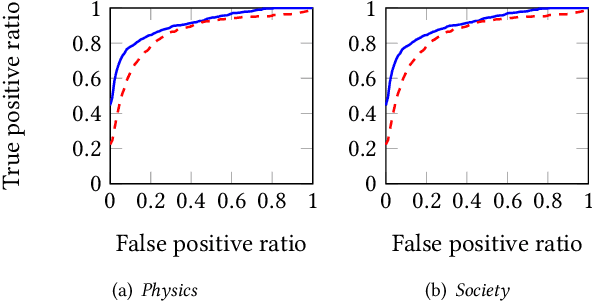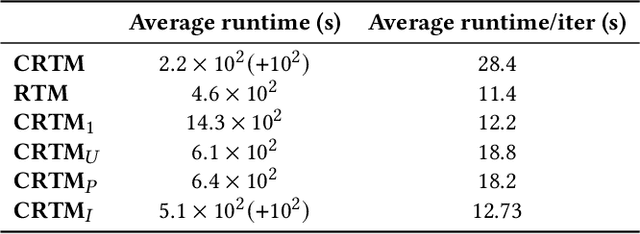Jean Dupuy
Anchor Prediction: A Topic Modeling Approach
Jun 01, 2022



Abstract:Networks of documents connected by hyperlinks, such as Wikipedia, are ubiquitous. Hyperlinks are inserted by the authors to enrich the text and facilitate the navigation through the network. However, authors tend to insert only a fraction of the relevant hyperlinks, mainly because this is a time consuming task. In this paper we address an annotation, which we refer to as anchor prediction. Even though it is conceptually close to link prediction or entity linking, it is a different task that require developing a specific method to solve it. Given a source document and a target document, this task consists in automatically identifying anchors in the source document, i.e words or terms that should carry a hyperlink pointing towards the target document. We propose a contextualized relational topic model, CRTM, that models directed links between documents as a function of the local context of the anchor in the source document and the whole content of the target document. The model can be used to predict anchors in a source document, given the target document, without relying on a dictionary of previously seen mention or title, nor any external knowledge graph. Authors can benefit from CRTM, by letting it automatically suggest hyperlinks, given a new document and the set of target document to connect to. It can also benefit to readers, by dynamically inserting hyperlinks between the documents they're reading. Experiments conducted on several Wikipedia corpora (in English, Italian and German) highlight the practical usefulness of anchor prediction and demonstrate the relevancy of our approach.
Document Network Embedding: Coping for Missing Content and Missing Links
Dec 06, 2019


Abstract:Searching through networks of documents is an important task. A promising path to improve the performance of information retrieval systems in this context is to leverage dense node and content representations learned with embedding techniques. However, these techniques cannot learn representations for documents that are either isolated or whose content is missing. To tackle this issue, assuming that the topology of the network and the content of the documents correlate, we propose to estimate the missing node representations from the available content representations, and conversely. Inspired by recent advances in machine translation, we detail in this paper how to learn a linear transformation from a set of aligned content and node representations. The projection matrix is efficiently calculated in terms of the singular value decomposition. The usefulness of the proposed method is highlighted by the improved ability to predict the neighborhood of nodes whose links are unobserved based on the projected content representations, and to retrieve similar documents when content is missing, based on the projected node representations.
 Add to Chrome
Add to Chrome Add to Firefox
Add to Firefox Add to Edge
Add to Edge